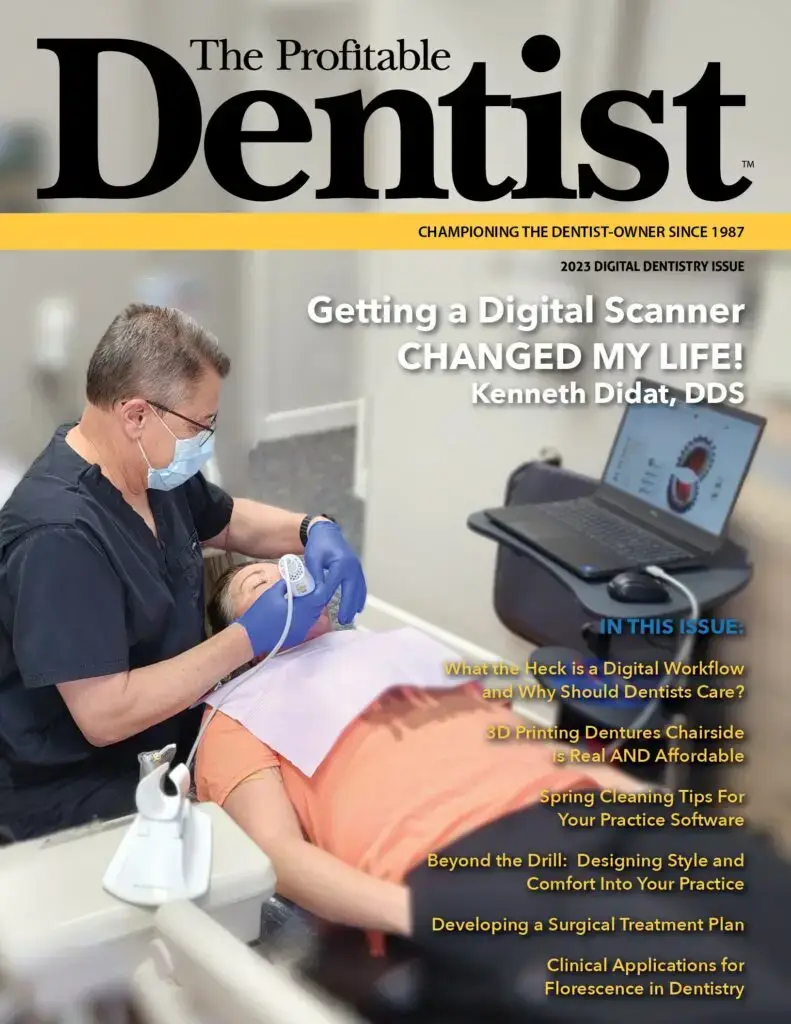Spot A/R weaknesses—and protect your practice from costly losses.
This article is contributed by Prosperident – Dentistry’s Embezzlement Experts.
This article focuses on protecting the financial integrity of your dental practice. While previous articles explored aging categories, workflow improvements, and collection strategies, this final installment goes deeper addressing the critical components of A/R management, the overlooked vulnerabilities that can lead to serious losses, and the real risk of embezzlement that often hides in plain sight.
Effectively managing A/R is essential to sustaining the financial health and operational control of any practice. Yet many offices fall behind due to preventable errors, inefficient systems, and—in some cases—internal fraud. In this article, we break down the foundational knowledge, hidden risks, and safeguards needed to protect your revenue, your patients, and your peace of mind.
Why Proper A/R Management Matters
While billing may seem like a routine part of operations, missteps in A/R can quietly accumulate and lead to significant financial consequences. One of the most common issues is a lack of formal training: employees may not fully understand how to follow up on insurance claims, communicate with patients about balances, or reconcile payments accurately.
Additional vulnerabilities include:
- High staff turnover or inadequate staffing, which often results in billing duties falling through the cracks.
- Complacency, where unresolved balances become normalized and are never properly addressed.
- Discomfort with financial conversations, where team members avoid asking patients for payments, leading to delays and missed collections.
- Failure to monitor patient credits, which can distort financials and become a blind spot for theft.
The Link Between A/R and Embezzlement
Accounts receivable is one of the most overlooked areas for financial theft—and one of the easiest for a dishonest employee to manipulate when proper safeguards aren’t in place.
Common Embezzlement Tactics in A/R:
- Posting adjustments to hide theft: An employee collects a patient’s payment but applies a false insurance write-off or discount to the ledger.
- Creating fraudulent refunds: Unmonitored credits are refunded to the employee’s personal account or through third-party payment processors.
- “No charge” entries: Services are marked as free or voided after payment was collected, allowing the employee to pocket the money.
- False payment reversals: A payment is entered and then reversed after the patient leaves, often without proper documentation or approval.
Real Case Example: In one audit, over $20,000 in “patient refunds” had been processed to a former employee’s personal PayPal account using credits that were never verified or authorized by management.
These actions often go unnoticed in busy offices where there is no segregation of duties or regular oversight. The longer fraud continues, the more damage is done—not just financially, but to patient trust and team morale.
Debits and Credits: The Cornerstones of A/R Integrity
Understanding debits and credits is fundamental to keeping A/R accurate, secure, and trustworthy:
Debits – What is owed to the practice
These include:
- Patient balances after insurance adjustments
- Outstanding insurance claims
- Missed copays or deductibles
Managing debits effectively ensures strong cash flow and reduces the aging of receivables.
Credits – What is owed by the practice
Credits result from:
- Overpayments by patients or insurance companies
- Prepayments for services
- Errors in estimating insurance coverage
Credits may seem harmless, but they can become a key vulnerability when left unmonitored. Inaccurate or manipulated credits can distort financial reports, trigger state unclaimed property penalties, and serve as a tool for internal theft.
Time is Money: Allocating Resources for A/R Oversight
Managing A/R is time-intensive and cannot be done effectively without dedicated hours and trained personnel. The chart below outlines an example of how much time a practice may need to allocate weekly based on an aging category:
Date | Total A/R | Current | 30–59 Days | 60–89 Days | 90+ Days |
Feb 6, 2025 | $140,000 | $50,000 | $20,000 | $30,000 | $40,000 |
Patient Accounts | 280 | 100 | 40 | 60 | 80 |
Time Required/week | 46 Hours | 16 Hours | 7 Hours | 10 Hours | 13 Hours |
Estimated Cost ($20/hr) | $920 | $320 | $140 | $200 | $260 |
Practices that designate time and expertise toward A/R management see fewer write-offs, better collections, and fewer opportunities for manipulation or theft.
Safeguards for Your Practice
To protect your practice from inefficiencies, losses, and fraud, implement a layered approach to oversight:
- Conduct monthly audits of A/R activity, including refunds, write-offs, and patient adjustments.
- Review credits weekly to identify overpayments, correct errors, and prevent fraudulent refunds.
- Enforce a dual-approval process for all adjustments, write-offs, and refunds—no single employee should control all financial activity.
- Use payment reports and audit trails within your practice management software to verify accuracy.
- Limit access permissions in your software based on roles and responsibilities.
- Train and cross-train financial team members to reduce single-person control of billing functions.
Ongoing A/R Maintenance: What Works
To avoid a reactive approach, implement systems and routines that build financial hygiene into daily operations:
- Outsource aged A/R or overflow billing tasks to experienced dental billing professionals.
- Print and review A/R reports weekly, ideally segmented by aging and responsible party (patient vs. insurance).
- Track and verify credits before issuing any refunds. Investigate discrepancies between ledger activity and payment reports.
- Establish monthly leadership reviews of A/R and adjustment reports to promote transparency and identify irregularities early.
To Summarize…
Strong A/R management is not just about collections—it’s about protecting your revenue, building trust with patients, and reducing risk. When A/R is mismanaged, it opens the door to inefficiency, write-offs, and internal theft. Understanding the movement of money, especially through debits and credits, gives you the control needed to operate with financial confidence.
Whether you’re a solo provider or a multi-location group, A/R is a direct reflection of your internal systems, team training, and accountability. Prioritize it—and protect it—and your practice will be positioned to grow securely and profitably.
Missed Parts 1 and 2?
Read them here

Amber Weber Gonzales
Amber began working in the dental field as a Registered Dental Hygienist in 2005. With a background in accounting and her interest in the business side of dentistry, she moved into office management roles and ultimately into dental consulting. Before joining the Prosperident team, Amber discovered embezzlement taking place in one of her clients' offices, bringing to light her aptitude for the kind of investigative and preventative work she now performs for our clients.
Amber was recently the runner-up in the prestigious Spotlight on Speaking competition, featuring dentistry's best-emerging speakers, and has been published in Dentistry Today magazine. In June 2022, Amber was appointed the head of Prosperident's Proactive Services Group, which provides embezzlement prevention services to individual practices, groups, and DSOs.

Alyssa Kimmins
Alyssa Kimmins started in dentistry in 1999, first as a Certified Dental Assistant, then as a Registered Dental Hygienist; all the while helping to manage the front office. Alyssa further developed her career teaching as an adjunct instructor for the Dental Assisting Program at Phoenix College.
With her deep dental working experience, Alyssa was able to retire from clinical practice and start her own remote dental billing company. In so doing, Alyssa discovered that one of her clients had been embezzled, which set the wheels in motion for Alyssa to join the Prosperident team. She thoroughly enjoys the investigation challenge and understanding how an embezzler will penetrate and steal from a dental practice.
Alyssa holds a BS in Dental Hygiene and a M.Ed. in Career and Technical Education from Northern Arizona University.

Kathy Kirkby
Kathy Kirkby has spent almost her entire adult life working in dentistry. Starting her career as a Registered Dental Assistant, she has worked chairside knee to knee with periodontists, other specialists, and general practitioners. Kathy completed her Degree in Health Education at Dalhousie University and began sharing her training methods with the dental world. She quickly progressed to office management of group and multi-office practices and then entered the world of consulting. Some of her accomplishments were training and monitoring teams in HR, practice management, practice dynamics, accounting, productivity and ideal scheduling.
Kathy complimented her repertoire working with dental teams and added CPHR – Certified Professional Human Resource to her toolbox. Kathy continues to attend and has presented many professional association meetings including The Golden Girls of Dentistry, Dental Assistants National Conference for Excellence, and has become a vetted member of the Academy of Dental Management Consultants- ADMC. She became Prosperident’s Chief Operating Officer in 2021.



